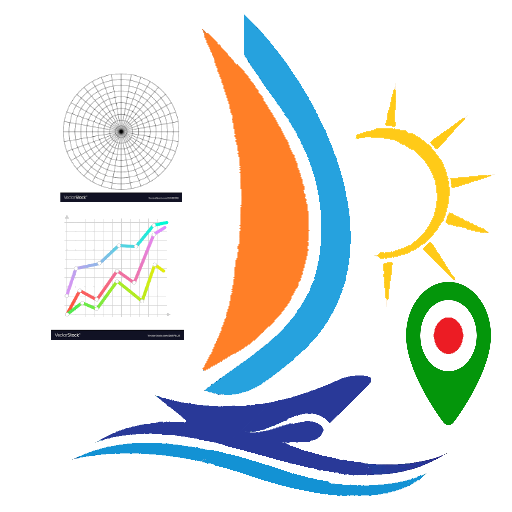Content Transfer
About this app
In today's digital landscape, transferring content between devices can be a seamless experience when utilizing the appropriate tools. Content transfer applications have emerged as essential solutions for individuals seeking to move photos, files, and data with ease.
This article examines the features and benefits of these applications, offering a comparative analysis of various options to assist in identifying the most suitable choice.
Additionally, a step-by-step guide on their effective usage is provided, along with an assessment of the associated advantages and disadvantages.
By the conclusion of this article, readers will possess the necessary insights to make an informed decision regarding their content transfer requirements.
Explanation of What They Are and How They Work
Content transfer applications are specialized mobile applications designed to facilitate the seamless migration of data between devices, ensuring the preservation of data integrity and user experience throughout the process. These applications utilize various transfer methods, including wireless transfer and cloud storage, enabling users to efficiently manage their data regardless of device compatibility or operating system.
By employing advanced performance metrics, these applications guarantee prompt and reliable file transfers while prioritizing user accessibility and ease of use.
The functionality of these applications extends beyond simple data movement; they play a crucial role in simplifying the overall experience of transitioning between devices. Users have the option to select from a variety of methods, such as Wi-Fi Direct, which allows for rapid data handling without requiring internet access, or they may choose cloud storage solutions that provide backup and recovery options.
This flexibility ensures that users can customize their file transfer experience to suit their specific needs.
The intuitive interfaces of these applications are designed to accommodate all user types, ensuring that even individuals with minimal technical knowledge can navigate the process with ease. Performance metrics are continuously monitored to enhance speed and reliability, making the transition from old to new devices smooth and efficient.
Ultimately, these content transfer applications dominate the data migration landscape, continuously evolving to improve user satisfaction and data security.
Features and Benefits of Content Transfer Apps
Content transfer applications provide a diverse array of features and benefits that significantly improve data management, facilitating the efficient and user-friendly transfer of files between devices.
Prominent features include:
- High transfer speeds
- Comprehensive security measures such as data encryption
- Intuitive user interfaces
- Multiple backup options to protect user data throughout the migration process
Collectively, these features enhance the overall functionality of the applications, enabling users to tailor their transfer solutions to meet their individual requirements.
Comparison of Different Apps and Their Unique Features
When evaluating various content transfer applications, it is crucial to assess their distinct features, functionalities, and user ratings to identify which application best meets individual requirements. Each application offers a unique set of functionalities, ranging from one-click transfer methods to batch transfer capabilities, and may present different levels of performance metrics and compatibility across platforms.
Expert reviews often underscore these differences, assisting users in navigating potential limitations of the applications and making informed decisions.
To enhance the evaluation process, it is important to consider specific factors such as transfer speed, ease of use, and customer support options. For example, while some applications excel in transferring large files rapidly, others may provide a more intuitive interface, which could be beneficial for users who are less technologically inclined.
User ratings can offer valuable insights into overall satisfaction and reliability, while expert reviews typically highlight any drawbacks, such as data limitations or specific device restrictions, that may affect users’ experiences.
By synthesizing this information, individuals can more effectively select a content transfer application that not only fulfills their requirements but also aligns with their expectations.
How to Use a Content Transfer App
Utilizing a content transfer application is a straightforward process; however, it is essential to adhere to the proper installation procedures and setup instructions to ensure a seamless experience.
Users should begin by downloading the chosen application, following the on-screen prompts for installation, and consulting available user tutorials for guidance on the various functionalities provided.
Furthermore, being prepared to troubleshoot any issues that may arise during the setup process will enhance the user experience and facilitate successful data migration.
Step-by-Step Guide on Transferring Content
This step-by-step guide outlines the process for transferring content using a content transfer application, ensuring that the migration is both efficient and successful. Initially, it is essential to select the desired transfer method, which may include options such as automated transfer or cross-platform transfer, and to ensure that both devices are connected in accordance with the app’s instructions. Users should follow the prompts to select the specific data types they wish to migrate, thereby facilitating a seamless content transfer between devices.
As you proceed, it is advisable to consider practical strategies for ensuring a smooth transition; for example, utilizing Wi-Fi for transferring larger data sets can significantly enhance transfer speed and reliability. Engaging effectively with the app's user interface is crucial; users should remain attentive to any notifications or prompts that may arise throughout the process.
When selecting data types, it is important to prioritize essential files such as contacts, messages, or documents, as user engagement often relies heavily on these key categories. Automated transfer operations can streamline the experience, minimizing the effort required for manual selections; however, it is always prudent to review the details to confirm that all data has been transferred as intended, thereby preventing any potential loss of important information.
Pros and Cons of Content Transfer Apps
Content transfer applications, like any technology, present a range of advantages and disadvantages that can substantially impact user experience and application efficiency.
The benefits typically include rapid and reliable transfer speeds, user-friendly interfaces, and comprehensive data management features. Conversely, potential drawbacks may encompass application limitations, compatibility issues, and differing levels of customer feedback regarding performance.
It is crucial for users to understand these factors when selecting an application for their data migration requirements.
Advantages and Disadvantages of Using These Apps
When evaluating content transfer applications, users should assess the advantages, such as enhanced application functionality and improved user experience, against potential disadvantages, including concerns related to data loss prevention and application limitations. These factors are critical in determining the suitability of a transfer application based on individual user needs and expectations.
For example, many content transfer applications offer seamless integrations with various platforms, enabling users to synchronize data effortlessly across devices. This capability can significantly streamline workflows, particularly for those managing multiple tools.
However, not all applications are created equal; some may impose restrictive file size limits or encounter compatibility issues that can impede the transfer process. Additionally, the risk of data loss during transfer due to unforeseen interruptions may raise concerns regarding reliability.
Users must carefully weigh these advantages and disadvantages, ensuring they select an application that not only enhances efficiency but also prioritizes data integrity and minimizes potential disruptions.
Final Thoughts and Recommendations
Selecting an appropriate content transfer application can significantly enhance user experience and facilitate efficient data migration across devices.
When evaluating available options, potential users should consider the overall popularity of the application within the market, as a well-established reputation often correlates with quality and trustworthiness. User satisfaction plays a critical role; applications with high ratings and positive feedback are likely to offer intuitive interfaces and robust support systems. Reviewing customer testimonials can provide valuable insights into the application’s real-world performance.
Thus, making an informed choice requires a careful consideration of these factors, allowing users to confidently transition their data with the assurance that they are employing a reliable and efficient tool tailored to their specific needs.
Related Apps
-
OP Auto ClickerGETTools and Productivity
-
Google Opinion RewardsGETTools and Productivity
-
Galaxy WearableGETTools and Productivity
-
Feit ElectricGETTools and Productivity
-
SailFreeGPSGETTools and Productivity
-
GeForce NOWGETTools and Productivity



















